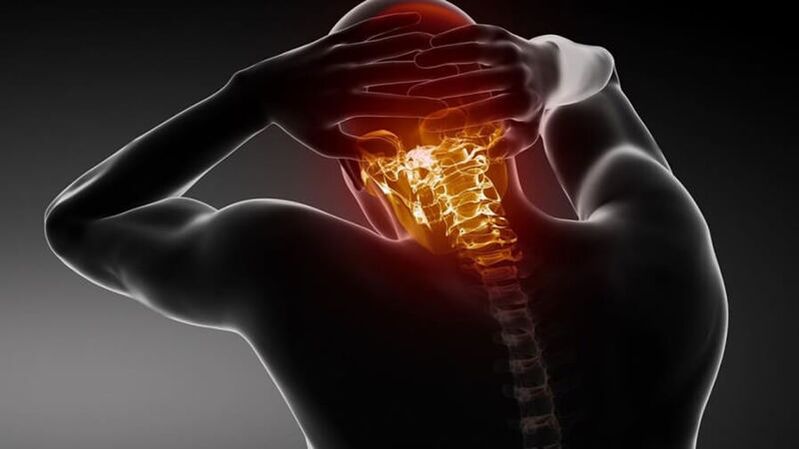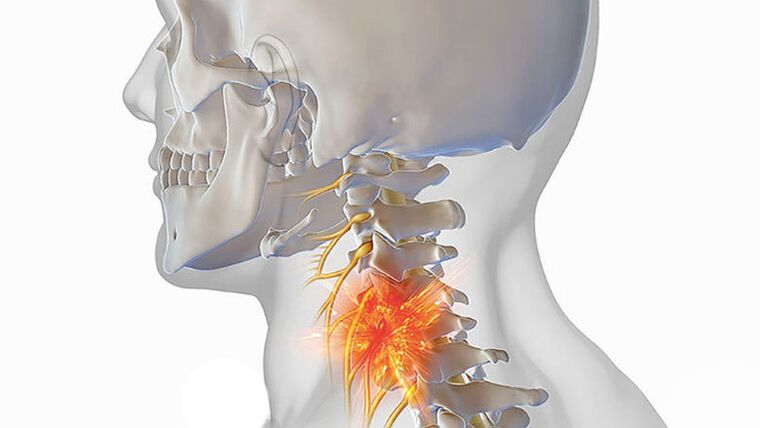
Since the distant ancestor of man Homo Erectus stood up, humanity, in addition to all the possible advantages associated with walking upright (protection from wild animals, improved visibility, expanded working functionality), receiveda rich set of musculoskeletal diseases. Cervical osteochondrosis is one of them. Some people don't take illness seriously, seeing it as an annoying but insignificant obstacle. This is especially true in situations where there is no severe pain.
Cervical osteochondrosis: causes, symptoms, treatment and prevention
Dizziness in cervical osteochondrosis is usually seen as a separate symptom from the main disease, but the disease can cause serious complications and even disability. In this article we will consider what medications should be taken for dizziness associated with cervical osteochondrosis, learn how to get rid of dizziness associated with cervical osteochondrosis, and analyze what exercises should be performed for dizziness associated with cervical osteochondrosis.
Osteochondrosis of the cervical spine
The term osteochondrosis comes from the ancient Greek words ὀστέον – "bone" and χόνδρος – "cartilage". Doctors use this term to refer to a group of dystrophic changes in articular cartilage caused by an increase in bone tissue volume. More than other joints, the cartilaginous joint between the vertebrae, called in medicine "disc", suffers.
Osteochondrosis is divided by type into "cervical", "thoracic" and "lumbar". The cervix is the most common. Today this disease is a constant companion of every person over 40 years old. Despite the opinion that this disease develops over the years and young people do not suffer from it, modern medical practice proves the opposite, demonstrating disappointing statistics among people over 30 years old.

Causes
The causes of osteochondrosis include direct (compression of vertebral vessels and nerves - compression of the cervical vertebrae) and indirect, related to the patient's lifestyle and physiological characteristics of his body.
Types of compression complications of osteochondrosis:
- Spondylolisthesis. Displacement of the vertebral disc from the rear or the front. At significant rates, displacement is fraught with paralysis and death.
- Osteophytes. Abnormal and pathological growth of bone tissue due to calcium salts.
- Projection. Protrusion of the intervertebral disc without disruption of the integrity of the collagen ring.
- Hernias. Displacement of the nucleus of the intervertebral disc with rupture of the collagen ring.
Reasons for compression:
- intense physical work;
- sedentary lifestyle, "computer" illness, sedentary pastime;
- weight is higher than normal;
- metabolic disorder;
- genetic predisposition;
- bad posture;
- low muscle tone of the neck and back in general;
- overwork, fatigue of the back and neck muscles;
- a tendency to a certain neck position, for example, the habit of tilting the head to one side;
- "old" injuries of the cervical spine;
- nervous shocks and stress.
Symptoms of cervical osteochondrosis
The main symptoms of cervical osteochondrosis are sporadic and constant pain in the neck, upper shoulder girdle, clavicles and head. In advanced illness, dizziness (dizziness) and loss of consciousness are possible.
The comprehensive symptoms of cervical osteochondrosis are so diverse that the patient is often unable to independently identify one or another symptom of neck osteochondrosis. Even the attending physician must carry out a detailed examination in order to make an accurate diagnosis.
The symptoms of the disease change as it progresses. Modern medicine distinguishes 4 stages of progression of osteochondrosis:
I – minor changes in normal cervical lordosis. There may be slight pain when turning the head. Slight discomfort when bending the neck;
II – minor displacements between the vertebrae, twisting (uncoordinated rotation of the vertebra in relation to the spinal cord), reduction in the thickness of the intervertebral cartilage. Pain of mild to moderate intensity appears in the neck and head, tingling in the fingertips, tinnitus, when turning the head, the patient hears a slight crackling sound;
III – the intervertebral cartilage is displaced by one quarter relative to the other, the thickness and size of the disc changes selectively, it becomes thinner, changes its normal shape, the posterior osteophytes narrow the spinal canal, injuring the cordspinal cord. The pain becomes intense, its sporadic character is lost, it becomes stable in nature, fluctuating from moderate to severe. Weakness appears in the hands, hearing is impaired. When you turn your head, the crunch is heard not only by the patient, but also by those around you. Possible loss of coordination of movements. By the way, dizziness associated with osteochondrosis of the cervical spine is a very alarming sign, for which you should immediately consult a doctor if this has not already been done;
IV – the intervertebral discs are significantly displaced, the posterior osteophytes and protrusions become abnormally large, the spinal canal is significantly narrowed and curved, myelopathy is formed (syndrome of compression of the spinal cord and its vessels). Frequent dizziness, loss of consciousness. Severe and very intense pain in the neck, head, collarbone, shoulders. The face, tongue and palate become numb. Vision and hearing are significantly impaired. Weakness throughout the body. The legs and arms are removed. Temporary paralysis of limbs. A very significant loss of coordination in space. Swallowing reflex disorder. Complete loss of sensation in the hands and throughout the body.
Treatment and prevention of cervical osteochondrosis
When the question is asked "how to cure osteochondrosis of the neck? "", it must be remembered that with cervical osteochondrosis, treatment must be timely, there is no way to be late.
Therapeutic and preventive measures are closely interrelated in the treatment of osteochondrosis of the neck. Conventionally, the difference between them lies in the severity of the disease. Prevention of osteochondrosis is applied before the onset of the disease and during its first three stages. Treatment of the disease begins as soon as it appears.
In this section we will find out whether it is possible to eliminate many unpleasant symptoms of cervical osteochondrosis at once, what exercises can be done for dizziness associated with cervical osteochondrosis, what tablets, drugs and folk remediesare best used for complicated osteochondrosis, how to treat dizziness, how to treat dizziness in cervical osteochondrosis with folk remedies.
Prevention
Eliminates many signs of osteochondrosis at once. Includes four types of therapy:
- The traditional way to eliminate signs of cervical osteochondrosis and dizziness is to constantly lead a healthy lifestyle;
- physiotherapy (not recommended from the third stage of development of osteochondrosis, although the final decision remains with the vertebrologist);
- massage and self-massage (although manual therapy is very effective for cervical osteochondrosis and can easily relieve pain, it is not recommended in the later stages of the disease);
- apply orthopedic advice and orthopedic appliances (Kuznetsov applicator, furniture, household items) in everyday life.
ethnoscience
Osteochondrosis of the neck can be treated at home using traditional medicine. The products she created are a creative composition of herbs, essential oils, fats, poisons, roots of various plants with alcohol and iodine.
Can traditional medicine relieve dizziness and pain? Here the situation is the same as in the case of drug treatment - the pain can disappear almost immediately, it will take some time to prevent dizziness. Treatment with traditional medicine should be started as early as possible, then it will certainly bring a positive result.

























